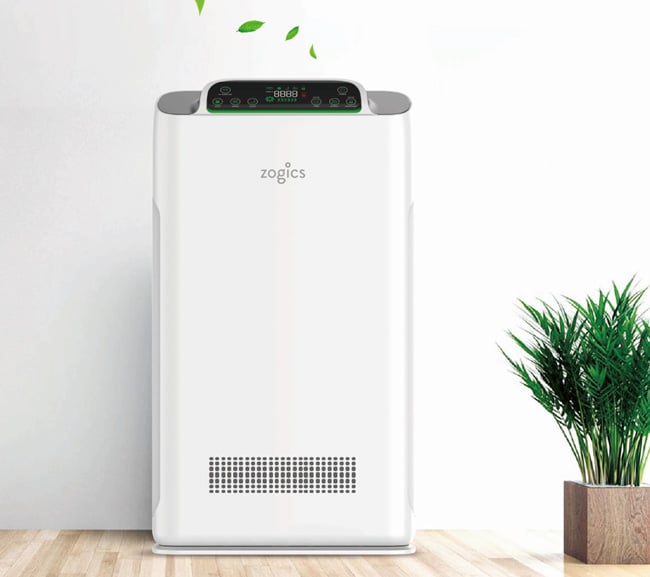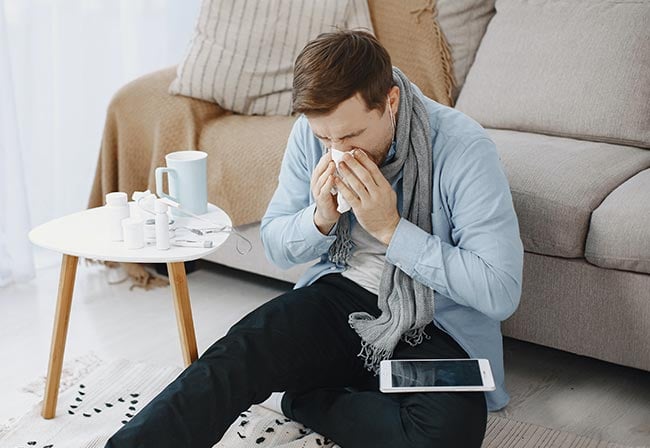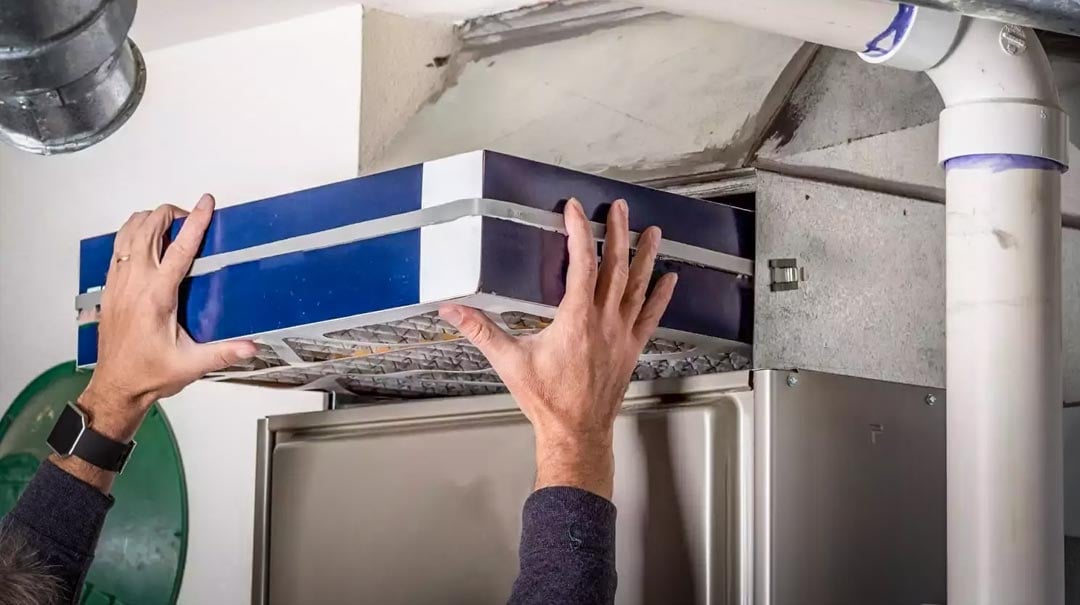Indoor Air Quality: Keep Your Business Free From Pollutants
In This Post:
- Effects of poor indoor air quality
- What causes poor air quality
- Ways to maintain indoor air quality
Every type of business faces some obstacles, and you don’t want any dangers to health and safety from poor indoor air quality (IAQ) to be one of them. Low air quality actually reduces productivity and indoor air pollution is one of the top five environmental risks to public health. Air quality can often go unnoticed until you realize your health has become harmed due to pollutants and toxic air particles. This is why it’s important to understand the causes and effects of poor air quality to avoid issues and create a healthy environment from the get-go.
The air quality of your specific business will depend on your location, building construction, and even the type of industry you’re involved with. Some regions have specific pollutants that are unique to that area, and businesses like gyms, schools and transportation centers have plenty of foot traffic and bacteria that can spread. Understanding the short and long-term effects of poor air quality should help you develop safe air quality practices. You’ll find that you can implement some useful techniques to maintain indoor air quality, and take advantage of helpful products such as air purifiers, and more.

Immediate and Long-term Effects of Poor Air Quality
Health concerns that arise from poor air quality can be experienced immediately, but you may also find some long-term effects. These effects may include allergies, cognitive issues, and other serious illnesses and diseases. It’s necessary to recognize that air quality will affect everyone differently, and people who are sensitive to changes in air quality should take extra caution. Once you learn how to maintain and monitor your indoor air quality, you can prevent these short-term and long-term effects.
Anyone who is allergic to dust, chemicals, and other environmental pollutants or material will most likely experience short-term effects from air quality. Even if you don’t suffer from allergies, certain airborne particles can get into your system and create minor or serious symptoms. You’ll know these effects are due to the poor air quality inside the business when the symptoms disappear while you’re away from the building for a good period of time.
 Recognize these short-term effects of poor air quality:
Recognize these short-term effects of poor air quality:
- Fatigue
- Dizziness
- Eye irritation
- Throat soreness and irritation
- Ear irritation
- Difficulty breathing
- Coughing
- Sneezing and runny nose
You may not experience some effects of poor air quality until well after being exposed. Long-term effects may occur from breathing in pollutants and harmful air particles for a prolonged or repeated amount of time. Symptoms can include cognitive changes, diseases, and syndromes. Long-term occupants of the building or employees of your business are most at risk of these long-term health effects.
 Be aware of these long-term effects of poor air quality:
Be aware of these long-term effects of poor air quality:
- Mood changes
- Cardiovascular disease
- Respiratory illness and diseases
- Cancer
- Neurological disorders
- Sick or tight building syndrome - experiencing intense health and comfort effects that tend to be related to the amount of time they spend inside a building
- Building-related illness
These short and long-term effects can ultimately vary and are not limited to these symptoms. You should also be aware of the physical damage that pollutants cause to the property that your business is on. This includes mold, smoke particles that cover furniture and flooring, and chemicals that can damage the building and your assets.
What Causes Poor Air Quality?
 There are many causes and factors of poor air quality, and it’s smart to cover all of your bases. This means that you should be prepared for any air quality triggers and understand the sources that you may not think apply to you and your business. Having a thorough understanding of the causes of poor air quality will also help you prioritize and learn how to improve indoor air quality.
There are many causes and factors of poor air quality, and it’s smart to cover all of your bases. This means that you should be prepared for any air quality triggers and understand the sources that you may not think apply to you and your business. Having a thorough understanding of the causes of poor air quality will also help you prioritize and learn how to improve indoor air quality.
Your climate and environment can be a major contributor to your business’s air quality, along with the materials used to construct your business. The cleaning products used in your place of business can also contribute to the air quality, creating toxic odors and pollutants. Particulate matter, a multitude of air contaminants, and the ground-level ozone can quickly impact the quality of the air and easily seep inside of buildings.
Here are some main causes of poor air quality:
- Particle pollution
- Wildfire smoke
- Air pollutants
- Ground-level ozone
- Volcanic ash and gases
- Natural disasters
- Dust and dander
- Toxic chemicals
- Cleaning products and materials
- Combustion, oil, and fuel-burning
- Building materials such as asbestos, lead, and flooring products
The causes of air quality are something that every business owner should consider. You can experience harmful smoke chemicals even if you don’t live in a wildfire zone, and bacteria can accumulate even when you don’t have a ton of foot traffic in your building. Your business or office can be where you spend a majority of your time, so you don’t want to spend that time breathing in unclean air.
When you identify air quality factors you need to target, you can implement some services and products to improve the air in your business. If you find that the construction of your building is a cause for concern, you can find flooring and business materials that promote clean air in your environment. Own a fitness facility? Schedule a consultation with us for your commercial gym flooring and switch to more eco-friendly materials. L–R: Zogics NSpire PRO Premium H13 HEPA Air Filtration System, Zogics UV Central Air Purifier, Big Ass Fans® AirEye, Big Ass Fans® Haiku
L–R: Zogics NSpire PRO Premium H13 HEPA Air Filtration System, Zogics UV Central Air Purifier, Big Ass Fans® AirEye, Big Ass Fans® Haiku
Ventilation is one of the biggest issues when it comes to air quality, and you can quickly improve the ventilation in your building with fans that promote maximum airflow.
An air purifier is a popular and effective product that can be used for air purification and air cleaning. Look for a HEPA air filter that has a high-efficiency rating to remove harmful air particulates. You can also utilize activated carbon that adsorbs VOCs and harmful chemicals, and this improves air quality in wildfire zones significantly. The Zogics Premium UV Central Air Purifier uses UV-C light and is safe and effective for handling heating, ventilation, and air conditioning all in one for HVAC units.
Wondering what indoor air quality tools are right for your facility to improve your indoor air quality?
Reach out to one of our experts at hello@zogics.com, and we will work with you on the right choices for your space. We have solutions for offices, fitness centers, classrooms, warehouses, and more that will keep your staff, students, and guests healthier and your business productive.
Empower your staff and reassure your community with our FREE downloadable cleaning and disinfecting guides for fitness centers, educational settings, hospitality facilities and more.
Topics from this blog: #trending Product Resources
Back


